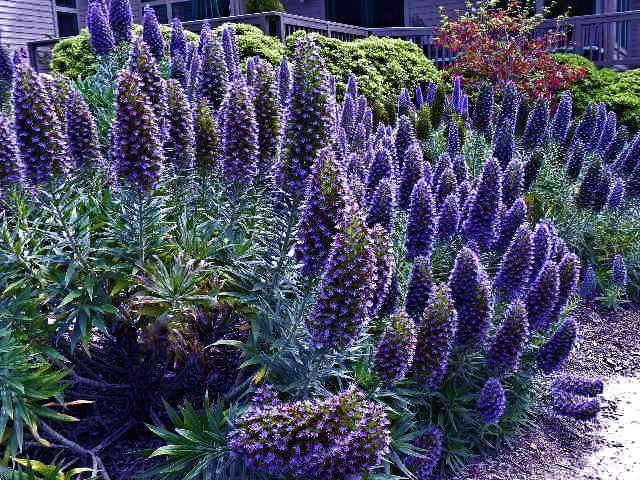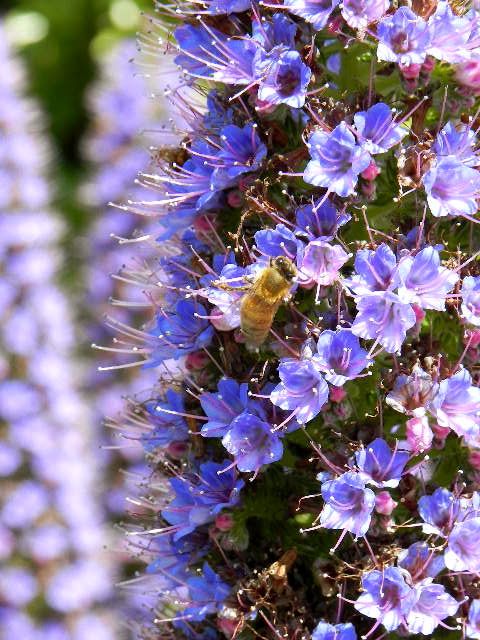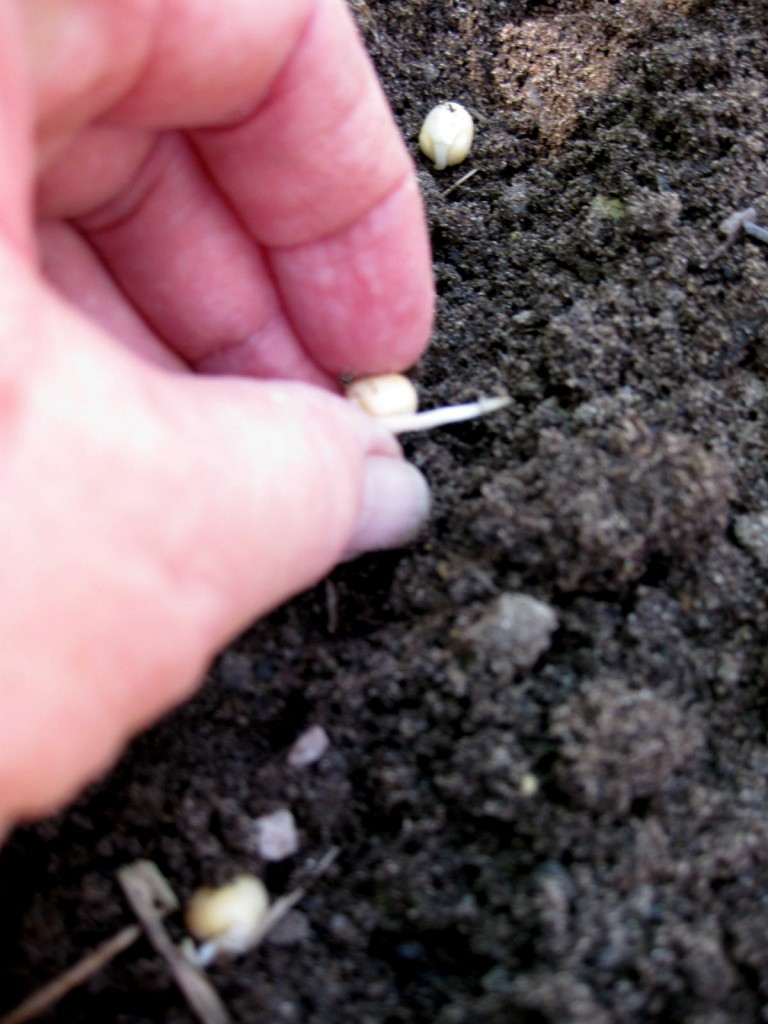
Pride of Madiera (Echuim candicans) is displaying its magnificent blue spires around my garden. The garden hums with honey bees, bumble bees, and the smaller cousins, solitary bees, as they gather pollen from the pride of Madiera blossoms.
This interesting plant is endemic to the island of Madiera in the Portuguese archipelagos. It is a short-lived perennial and only survives a few years. But oh, those short lives are lived so well.
The plant grows to 6 feet and thrives along the coast of California. I remember the hillsides in San Francisco ablaze in blue in the spring and early summer. The “Pride” grows best in full sun in a temperate climate. I’m sorry to say that it cannot survive frost.

You can propagate from cuttings but I’ve found that if you lay a few of the spent spires across a large pot filled with moist potting soil, you’ll get volunteers that you can transplant into one gallon pots when they are a few inches tall. When the gallon plants have grown to 12 inches, set them into their permanent locations. They can be planted in the spring or fall.
I cut off the spires when they turn brown. I wear long-sleeved shirts when I perform this task as the “Pride” has tiny hairs that irritate my skin. While I wish this plant was more permanent, it has some attributes that I value: drought tolerant, deer resistant, fast growing, tolerates clay and sandy soil, grows well on hillsides, and is beautiful!



So pretty! I don’t grow them in my small garden but I do have E. wildpretii, aka Tower of Jewels. Flowers open coral and fade to purple. Each plant only has one flower stalk that blooms the second year but it’s an extraordinary show as the stalks are often 7′ or so.
I’ve seen those stunning plants, Christina. I didn’t realize that they were in also Echuims. They are good plants to grow inland on the Central Coast since they can tolerate hard frosts. Hope your hens are doing well!
Interesting, didn’t know that about the frosts.
Chickens are well! This winter Ruby, our RIR, went through a very hard molt and some strange behaviors along with it, but she has feathered out and is back to her old self. The girls have been enjoying the earthworms — wish it was sowbugs and snails on the menu instead…